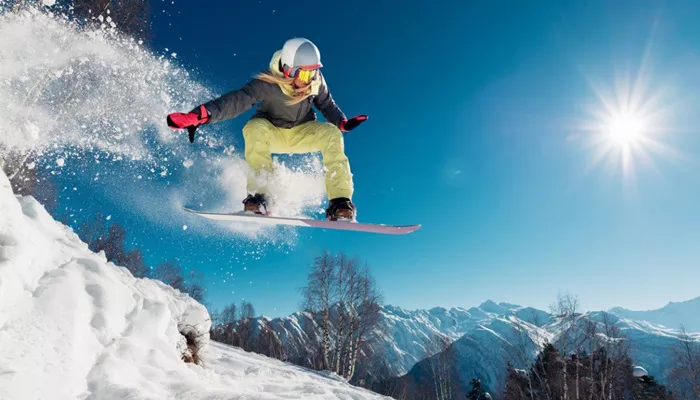Freeride snowboarding is all about exploring unmarked terrain, deep powder, and natural features. Unlike freestyle or park riding, freeride demands boards designed for stability, float, and control in variable snow conditions. In 2025, snowboard technology continues to evolve, offering riders better performance and durability. This article explores the 10 best freeride snowboards of 2025 with detailed descriptions and expert evaluations.
What Makes a Great Freeride Snowboard?
Design and Shape
Freeride boards usually have directional shapes that favor one-way riding. The nose is often longer and wider for better float in powder, while the tail is tapered for control. This shape helps in deep snow and steep descents.
Camber Profiles
Many freeride boards use hybrid camber profiles that combine camber underfoot with rocker at the tip and tail. This mix provides stability, edge hold, and float, essential for off-piste conditions.
Materials and Construction
High-quality wood cores, carbon or basalt reinforcements, and sintered bases improve strength, responsiveness, and glide. Lightweight but durable construction is key to long days in variable terrain.
Top 10 Freeride Snowboards of 2025
1. Jones Flagship 2025
The Jones Flagship remains a top freeride choice. It has a directional shape with a long nose and tapered tail. The camber rocker profile offers precise edge control and excellent float in powder. Its carbon stringers add pop and responsiveness. The sintered base ensures fast glide on variable snow.
2. Burton Flight Attendant
Burton’s Flight Attendant is built for steep and deep terrain. It features a directional shape with a camber-dominant profile that offers strong edge hold. The FSC Certified Super Fly II wood core combined with dual zone EGD wood grain enhances strength and pop. This board handles varied conditions with ease.
3. Lib Tech T.Rice Orca
The T.Rice Orca blends surfy float with aggressive freeride performance. Its asymmetrical shape improves control on turns, while the C2 camber profile offers a balance of power and playfulness. Magne-Traction edges provide grip on hardpack and ice. It’s a versatile option for freeriders.
4. Arbor Coda
Arbor’s Coda is designed with an eco-conscious wood core and a directional rocker profile. Its shape and profile give excellent float in powder and stability at speed. The grip tech edges add confidence on icy slopes. It’s a solid choice for riders seeking sustainability with performance.
5. Gnu Riders Choice
The Gnu Riders Choice uses a hybrid camber profile for stability and maneuverability. Its asymmetrical design allows easier heel-to-toe transitions and control. This board excels in deep powder and variable terrain, with Magne-Traction edges enhancing grip.
6. Capita Black Snowboard of Death
This aggressive freeride board from Capita is known for its pop and stability. The directional camber profile gives solid edge hold and responsiveness. Reinforced with carbon fiber and a sintered base, it offers speed and durability for challenging descents.
7. Never Summer Proto Synthesis
The Proto Synthesis is a versatile freeride board featuring a directional twin shape and a hybrid camber profile. It delivers smooth turns and stability in powder and hardpack. The carbon VXR lamination boosts energy return and control on steep lines.
8. Salomon Assassin Pro
Salomon’s Assassin Pro combines freeride stability with freestyle agility. Its directional shape with Rock Out Camber ensures precise control and excellent float. The bamboo and Paulownia wood core keeps the board lightweight yet responsive, ideal for long days in the backcountry.
9. K2 Cool Bean
The Cool Bean stands out with its unique short and wide shape. It offers exceptional float in powder due to the oversized nose and tapered tail. The directional rocker profile enhances maneuverability on steep terrain. This board suits riders looking for playful freeride performance.
10. Ride Berzerker
The Berzerker is built for aggressive freeriders. It features a directional camber profile that gives strong edge hold and pop. Its bamboo and fiberglass core construction provides strength and flexibility. This board performs well in steep, technical terrain with variable snow.
How to Choose the Right Freeride Snowboard
Consider Your Riding Style
Freeride boards vary from surfy and playful to stiff and aggressive. Choose a board that matches your preferred terrain and riding approach. For deep powder, a longer nose and softer flex are beneficial. For steep, technical lines, look for boards with stiffer flex and precise edge hold.
Check the Board’s Length and Width
The length affects stability and float. Longer boards offer more surface area for powder but can be less maneuverable. Width is important for boot size; a wider board prevents toe and heel drag during turns.
Evaluate Construction and Materials
High-quality cores and laminates improve durability and performance. Carbon and basalt reinforcements add strength without extra weight. Sintered bases are faster but require more maintenance.
Maintaining Your Freeride Snowboard
Regular Waxing
Wax your board regularly to maintain a smooth glide and protect the base. Use wax appropriate for the snow temperature and conditions.
Edge Sharpening
Sharp edges improve grip on icy and hardpack snow. Use an edge tool to maintain a clean bevel. Avoid over-sharpening, which can weaken edges.
Inspect for Damage
Check the base and edges for cracks or gouges. Repair any damage promptly to avoid worsening and to maintain performance.
Conclusion
Choosing the best freeride snowboard for 2025 depends on your terrain preferences, riding style, and skill level. The 10 boards listed offer a range of shapes, flexes, and technologies to suit various freeride demands. Careful selection and maintenance of your board will enhance your performance and enjoyment in the backcountry.

